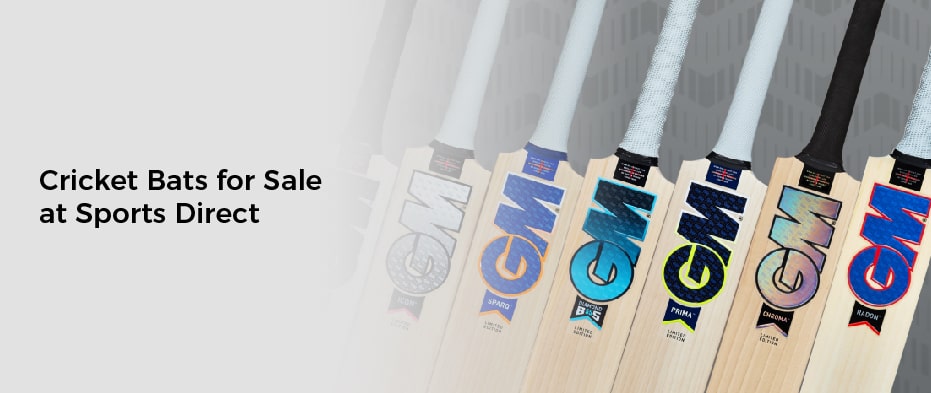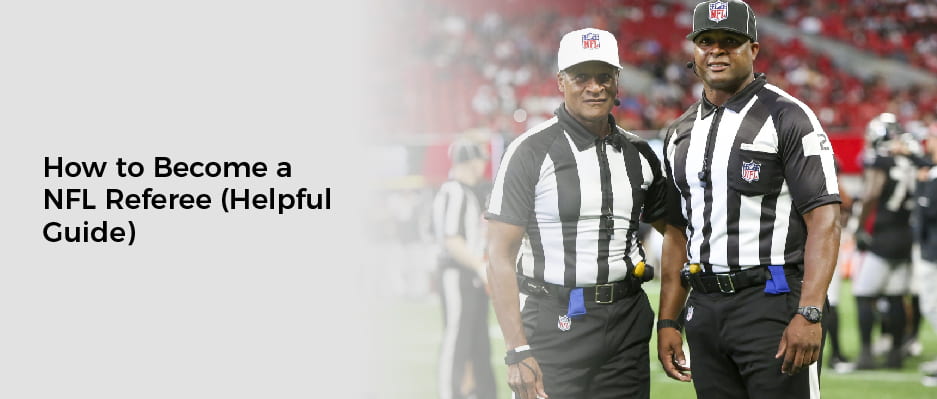Have you ever wondered which sports cost the most money to play? While many people assume golf is the priciest sport, the reality might surprise you.
The world of most expensive sports goes far beyond buying a set of clubs or paying membership fees.
These most expensive sports require massive investments in equipment, training, travel, and maintenance that can easily reach hundreds of thousands or even millions of dollars annually.
From the high-tech world of Formula 1 to the centuries-old traditions of polo, these most expensive sports represent not just athletic pursuits but exclusive lifestyles accessible primarily to the wealthy.
Most Expensive Sports in the World

In this comprehensive guide, we’ll explore the top 10 most expensive sports in the world as of 2025, breaking down why they cost so much and what makes them worth the investment for those who can afford them.
Formula 1 Racing
Formula 1 Racing stands firmly at the top of our list as the most expensive sport in the world. This isn’t just about driving fast cars—it’s a showcase of cutting-edge technology and engineering excellence.
Why Formula 1 Is So Expensive:
- Team Budgets: Despite budget caps limiting spending to approximately $145 million annually, top teams previously spent upwards of $500 million in a single season
- Car Development: Each F1 car costs between $12-15 million to build
- Engine Costs: A single Formula 1 engine can cost around $10.5 million
- Staff Requirements: Top teams employ over 800 people
| Expense Category | Approximate Annual Cost |
|---|---|
| Car Development | $50-70 million |
| Power Units | $15-20 million |
| Driver Salaries | $10-50 million |
| Travel/Logistics | $20 million |
The exclusive nature of Formula 1 is emphasized by its premium sponsorship deals with luxury brands like Rolex, Tag Heuer, and Mercedes. Even with budget caps in place, finding ways to maximize performance while staying within financial limitations has become a crucial part of the sport’s competitive strategy.
Yacht Racing
Yacht Racing secures the second position on our list. While anyone could take a small boat out on the water, competitive yacht racing represents one of the most financially demanding sporting pursuits available.
The Staggering Costs of Competitive Sailing:
- Vessel Costs: Professional racing yachts start at $1 million and can exceed $100 million for America’s Cup competitors
- Crew Expenses: Professional crews can cost $500,000-$2 million annually
- Maintenance: Annual maintenance typically runs 15-20% of the yacht’s value
- Transportation: Moving yachts between venues can cost $100,000+ per transport
Why Yacht Racing Demands Such Investment:
Racing yachts require cutting-edge materials, advanced navigation equipment, and custom hardware. The logistical challenges of international transport, support vessels, and shore team accommodations add substantial costs.
The most prestigious yacht racing events like the America’s Cup can require team budgets of $100-150 million, with competitors often coming from business tycoons, tech billionaires, and royalty. The sport remains one of the most exclusive competitive pursuits globally.
Horse Racing
Horse Racing, often called “The Sport of Kings,” occupies the third spot on our list. While many see it as merely an opportunity for betting, the actual costs of owning and racing thoroughbreds reveal why it’s among the most financially demanding sports.
The True Cost of Thoroughbred Racing:
- Horse Acquisition: Top racing prospects cost between $100,000-$10 million
- Training Fees: Professional training averages $30,000-$50,000 annually per horse
- Stabling Costs: Proper stabling facilities run $20,000-$60,000 yearly
- Veterinary Care: Medical expenses average $15,000-$30,000 annually
- Insurance: Insuring valuable racehorses costs 3-5% of the horse’s value annually
Behind the Scenes Expenses:
- Transportation: Specialized horse trailers and shipping costs of $2,000-$20,000 per journey
- Race Entry Fees: From $500 for local races to $50,000+ for prestigious events
- Jockey Fees: Professional jockeys receive a retainer fee plus 7-10% of winnings
The risk-reward ratio makes horse racing particularly expensive. Even with investments of millions, success is never guaranteed. Only about 30% of racehorses ever win a race, and just a tiny fraction generate significant prize money.
Equestrian Competitions
While Horse Racing and Equestrian Competitions both involve horses, they represent distinctly different sports with unique cost structures. Equestrian sports focus on the skill, training, and partnership between horse and rider.
The Major Disciplines and Their Costs:
Equestrian sports include show jumping, dressage, eventing, and endurance riding, each with specific expenses.
Why Equestrian Sports Are So Expensive:
- Horse Acquisition: Competition-level horses cost between $50,000-$500,000 for jumping and $60,000-$1,000,000+ for top dressage prospects
- Training: Professional training fees run $1,000-$5,000 monthly
- Boarding/Stabling: Full-service boarding averages $1,500-$4,000 monthly
- Equipment: Saddles ($3,000-$15,000), bridles, boots, and specialty gear
- Show Expenses: Entry fees, stabling, coaching, and travel to competitions
Annual Maintenance Costs:
| Expense Category | Annual Cost Range |
|---|---|
| Veterinary Care | $5,000-$30,000 |
| Farrier Services | $1,800-$3,600 |
| Feed/Supplements | $6,000-$15,000 |
| Insurance | $3,000-$15,000 |
| Transportation | $10,000-$50,000 |
The long-term commitment required makes equestrian sports particularly expensive. Elite equestrians often require corporate sponsorships or personal wealth to sustain careers, with annual expenses commonly exceeding $200,000 for those competing on the global circuit.
Polo
Polo, often referred to as “the game of kings,” has a long history as one of the world’s most exclusive sports. This team sport played on horseback combines elements of horsemanship, strategy, and teamwork with significant financial requirements.
The Royal Roots of Polo Expenses:
- Multiple Horses Required: Professional players need 4-8 horses for a single match
- Horse Quality: High-quality polo ponies cost between $20,000-$200,000 each
- Frequent Rotation: Horses must be changed every 7-10 minutes during play
- Specialized Training: Polo ponies require years of specialized training
Breaking Down Polo’s Costs:
- Horse Purchase: Minimum $150,000-$1,000,000 for a complete string of horses
- Maintenance: Annual costs of $25,000-$50,000 per horse
- Club Memberships: $20,000-$200,000 annually at prestigious clubs
- Tournament Fees: $10,000-$100,000 for team entry in elite tournaments
For those sponsoring or owning polo teams, expenses increase dramatically with player salaries, horse acquisition, and international travel costs.
The social aspect of polo adds another dimension of expense, with expectations for appropriate attire and entertainment.
This combination makes polo one of the most financially demanding sports, with serious participants routinely spending well over $500,000 annually.
Sailing
While Yacht Racing focuses on competitive racing events, recreational Sailing as a serious sport also commands significant investment. Despite its perception as a leisure activity, competitive sailing requires substantial financial resources.
The Cost Breakdown of Competitive Sailing:
- Olympic-Class Boats: $15,000-$75,000
- Mid-Size Racing Sailboats: $100,000-$300,000
- High-Performance Racing Yachts: $250,000-$1,000,000+
Annual Expenses:
- Mooring/Storage: $5,000-$50,000 for harbor fees and storage
- Maintenance: 10-20% of boat value annually
- Insurance: 1-5% of boat value
- Sail Inventory: Racing sails need frequent replacement at $5,000-$100,000+
- Equipment Updates: Keeping competitive with new technology
The saying “a boat is a hole in the water into which you pour money” particularly applies to competitive sailing. Serious competitive sailors typically spend $50,000-$200,000 annually outside of initial vessel acquisition.
Bobsledding
Bobsledding might seem like an unexpected entry on this list, but this winter sport involves surprisingly high costs that place it among the world’s most expensive competitive pursuits.
Why Bobsledding Costs So Much:
- Equipment Scarcity: Limited manufacturers and specialized designs
- Facility Limitations: Few bobsled tracks exist worldwide
- Transportation Challenges: Moving heavy equipment to specific venues
- Team Requirements: Multiple athletes needed for each sled
Breaking Down Bobsledding Expenses:
- Bobsled Purchase: $30,000-$100,000 for a competitive sled
- Runners (Blades): $5,000-$10,000 per set, with multiple sets needed
- Track Time: $200-$500 per run with limited availability
- Coaching: $40,000-$100,000 annually for specialized expertise
- Travel: $50,000-$150,000 annually for the international competition circuit
One of the most significant cost factors is the extreme scarcity of bobsled tracks, with only 16 competition-standard tracks worldwide. Athletes often must relocate or travel extensively to train, with track time limited and expensive.
Annual team expenses commonly exceed $200,000, placing this winter sport firmly among the world’s most expensive competitive pursuits.
Golf
Golf has a reputation as an expensive sport, and while it may not reach the astronomical costs of Formula 1 or yacht racing, the financial commitment required for serious participation still places it firmly on our list.
Breaking Down Golf Expenses:
- Club Sets: $1,000-$3,000 for quality clubs, $5,000+ for premium sets
- Consumables: Golf balls ($25-$50 per dozen), gloves, tees
- Membership Fees: Country club initiation fees can range from $25,000-$500,000+ with annual dues of $5,000-$50,000+
- Tournament Entry Fees: $100-$6,000 depending on tour level
- Travel Expenses: $100,000-$200,000 annually for touring professionals
- Coaching: $50,000-$150,000 annually for technical coaching
Golf’s combination of recurring expenses, membership requirements, and ongoing commitments creates a significant financial barrier, particularly at higher levels of participation.
Serious competitive golfers typically invest $30,000-$100,000+ annually in their sport, with professional hopefuls facing expenses that can exceed $150,000 per year.
Tennis
Tennis presents interesting cost structures between recreational play and professional competition. While casual players can participate with minimal investment, competitive and professional tennis involve substantial financial commitments.
The Professional Tennis Cost Structure:
- Professional Coaching: $75-$250 per hour or $50,000-$200,000 annually
- Court Time: $20-$100 per hour at quality facilities
- Competition Travel: $50,000-$300,000 annually, depending on level
- Equipment: Multiple racquets ($200-$300 each), frequent restringing, shoes replaced every 1-2 months
- Physical Maintenance: Physiotherapy, massage, strength conditioning
Tennis requires early specialization and long-term financial commitment, with most professionals facing years of negative return on investment before reaching levels where prize money and sponsorships cover expenses.
This extended period of financial commitment—often 10+ years before profitability—makes tennis particularly expensive over the career development timeline.
Annual costs routinely exceed $140,000 for professionals and serious competitors.
Pentathlon
Modern Pentathlon combines five distinct disciplines—fencing, freestyle swimming, equestrian show jumping, pistol shooting, and cross-country running—creating an exceptionally diverse and financially demanding sport.
Breaking Down Pentathlon Expenses:
- Equestrian Costs: Horse leasing ($1,000-$5,000 monthly), riding lessons, equipment
- Fencing Expenses: Épées ($200-$500 each), protective gear, coaching ($50-$120 per hour)
- Shooting Costs: Air pistol ($1,000-$3,000), electronic targets, ammunition, range time
- Swimming and Running: Pool access, coaching, running gear
Beyond the direct costs, pentathlon athletes face unique logistical challenges in balancing training across five disciplines, finding appropriate facilities, and managing recovery requirements.
Serious competitors face annual expenses of $50,000-$100,000, with national sports federations often providing significant support due to these prohibitive costs.
FAQs About Expensive Sports
- What makes a sport expensive to participate in?
Factors that contribute to a sport’s high cost include specialized equipment, limited facility access, geographic limitations, ongoing maintenance, specialized coaching, and high competition costs.
- Can average people participate in these expensive sports?
Yes, but with limitations. Most of these sports offer entry points at lower cost levels through club memberships, sponsorships, national programs, or gradual progression. The elite competitive levels remain largely inaccessible without significant financial resources.
- Which sport has seen the biggest cost increases in recent years?
Formula 1 has experienced dramatic cost escalation, with team budgets ballooning from around $120 million in the early 2000s to over $500 million by 2020, prompting the introduction of budget caps.
- Are there any affordable alternatives to these expensive sports?
Many of these sports have more accessible variants like karting instead of Formula 1, dinghy sailing instead of yacht racing, trail running instead of equestrian sports, recreational golf at public courses, or table tennis instead of professional tennis.
Also Check:
- Top 10 Dangerous Batsman of IPL History
- Top 10 Smallest Cricket Stadiums in India
- Top 10 Tallest Cricketers In The World
- Top 10 Most Beautiful Women Cricketers In The World
- Most Hardest Sports in The World
Conclusion:
Our exploration of the top 10 most expensive sports in the world reveals not just the financial requirements of elite athletic pursuits but also the complex relationship between wealth, access, and competitive opportunity in global sports.
From the technological marvels of Formula 1 to the aristocratic traditions of polo, these sports represent significant financial investments that place them beyond the reach of most participants without substantial backing.
Several key themes emerge across these expensive sporting pursuits: technology and innovation drive costs in mechanized sports, living assets like horses create ongoing expenses, geographic limitations increase costs for sports requiring specific environments, and equipment sophistication continually advances, requiring regular investment.
The financial barriers to these sports raise important questions about talent development and competitive balance.
Many potentially gifted athletes never have the opportunity to discover their abilities in these fields due to prohibitive costs. This reality has prompted some sports governing bodies to implement cost control measures and development programs aimed at broadening access.
Despite these challenges, the allure of these prestigious sports continues to attract participants willing to make substantial investments in pursuit of their passion.
Understanding the true costs of these elite activities provides a valuable perspective on the broader sports landscape and the diverse pathways through which athletes pursue excellence.



